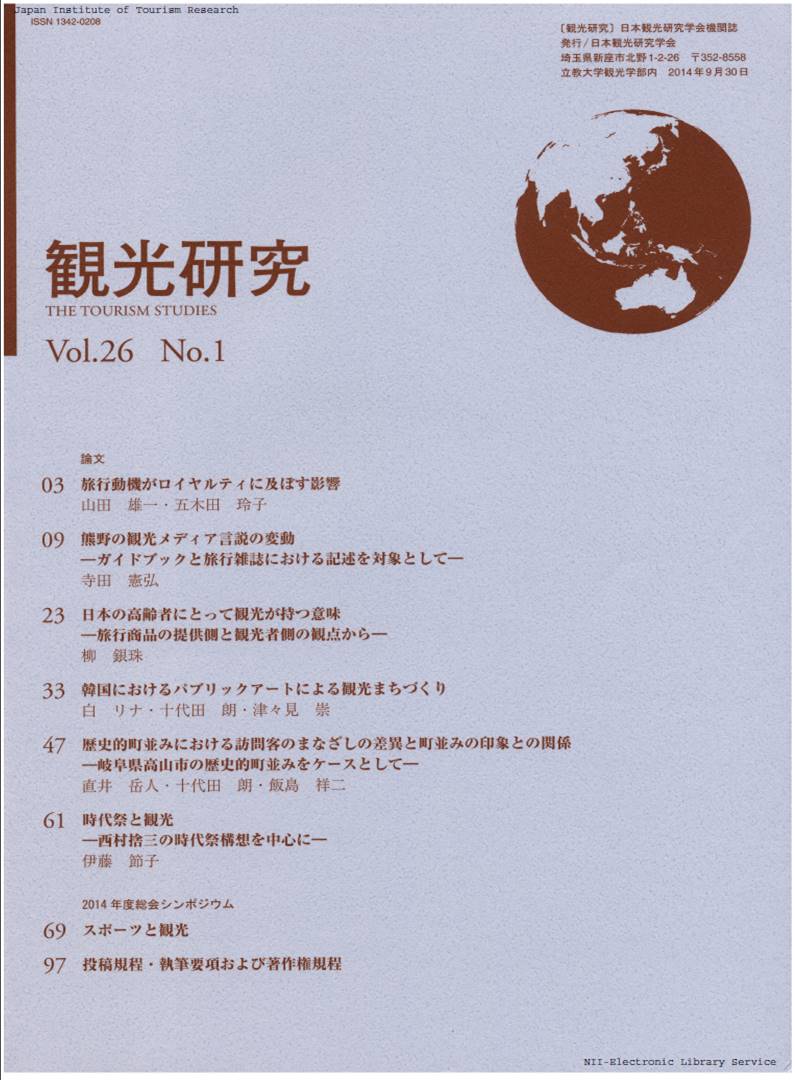14 巻, 1 号
選択された号の論文の12件中1~12を表示しています
- |<
- <
- 1
- >
- >|
論文
-
原稿種別: 本文
2002 年 14 巻 1 号 p. 1-8
発行日: 2002/09/30
公開日: 2017/04/01
PDF形式でダウンロード (11891K) -
原稿種別: 本文
2002 年 14 巻 1 号 p. 9-16
発行日: 2002/09/30
公開日: 2017/04/01
PDF形式でダウンロード (1193K) -
原稿種別: 本文
2002 年 14 巻 1 号 p. 17-24
発行日: 2002/09/30
公開日: 2017/04/01
PDF形式でダウンロード (1026K)
その他
-
原稿種別: 表紙
2002 年 14 巻 1 号 p. Cover1-
発行日: 2002/09/30
公開日: 2017/04/01
PDF形式でダウンロード (51K) -
原稿種別: 表紙
2002 年 14 巻 1 号 p. Cover2-
発行日: 2002/09/30
公開日: 2017/04/01
PDF形式でダウンロード (51K) -
原稿種別: 付録等
2002 年 14 巻 1 号 p. App1-
発行日: 2002/09/30
公開日: 2017/04/01
PDF形式でダウンロード (69K) -
原稿種別: 付録等
2002 年 14 巻 1 号 p. App2-
発行日: 2002/09/30
公開日: 2017/04/01
PDF形式でダウンロード (69K) -
原稿種別: 付録等
2002 年 14 巻 1 号 p. App3-
発行日: 2002/09/30
公開日: 2017/04/01
PDF形式でダウンロード (69K) -
原稿種別: 付録等
2002 年 14 巻 1 号 p. App4-
発行日: 2002/09/30
公開日: 2017/04/01
PDF形式でダウンロード (69K) -
原稿種別: 付録等
2002 年 14 巻 1 号 p. App5-
発行日: 2002/09/30
公開日: 2017/04/01
PDF形式でダウンロード (13K) -
原稿種別: 表紙
2002 年 14 巻 1 号 p. Cover3-
発行日: 2002/09/30
公開日: 2017/04/01
PDF形式でダウンロード (28K) -
原稿種別: 表紙
2002 年 14 巻 1 号 p. Cover4-
発行日: 2002/09/30
公開日: 2017/04/01
PDF形式でダウンロード (28K)
- |<
- <
- 1
- >
- >|
